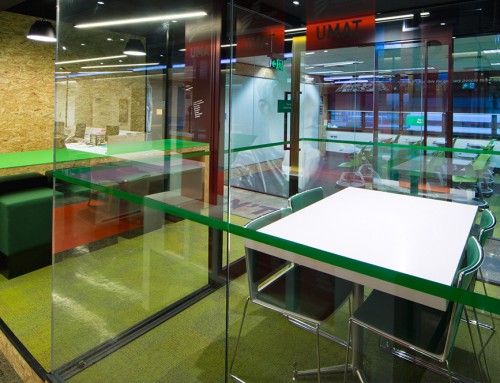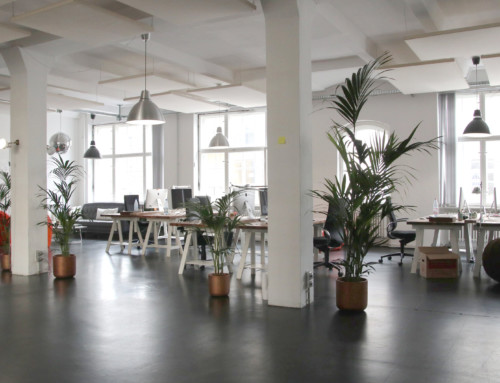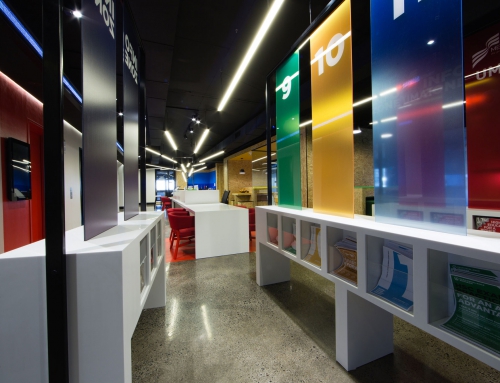Millennials and Boomers have two drastically different philosophies in what they want out of their workspaces, and that can give rise to tension in the office. The Boomer generation preferred quiet spaces and privacy, creating the traditional cubicle office design, still commonly used by large organisations, with a need for internal procedures, standardisation and bureaucratic communication.
However, the rise of the Millennial era single-handedly reintroduced and kickstarted the open-plan office, with their preference for open spaces with less hierarchy, natural light and comfortable collaborative spaces.
With Millennials arising to overturn the Boomers as the majority in the workforce, as well as being the generation to be recruited in the future, many businesses are catering to the design preferences of Millennials to the culture shock of the Boomers who have been loyal to the company for decades.
Many Boomers won’t even be nearing retirement for many years yet (the youngest Boomers will reach 65 by 2029), while the Millennial generation will only continue stepping into the workforce with stronger momentum.
How is it possible to balance the needs and preferences of both generations to keep them happy?
The Rival Philosophies of Boomers and Millennials
Boomers and Millennials have the biggest difference in philosophies and preferences between all four generations in the workforce today. These philosophies influence the choices in which they seek and value in their workplace.
Consider, for example, how both generations consider the question of work-life balance.
Boomers, having been influenced by the values of their Traditionalist parents, separate the concepts of ‘work’ and ‘life’. They seek a balance between two competing areas of life, and such a separation makes Boomer’s value privacy and quietness in their workplaces. They wish to get the job done, in a friendly environment that motivates them to do good work.
Millennials, however, were influenced by their Boomer parents. Having seen the struggles of their Boomer (and Gen X) parents struggle with balancing work and life – perhaps often failing to meet familial obligations for the sake of their demanding careers – Millennials instead seek to integrate work into their life.
That’s why when seeking work, Millennials look for job flexibility and workplaces that support their social needs. Authority and clear structures, like private offices (which Boomers see as a status symbol) become less important. An engaging workplace and doing fulfilling work while having a workplace support their health and wellbeing becomes much more attractive.
How different these generations have become is obvious when comparing two factors of the office. Boomers valued ‘engaging workplaces’ as lowest on their needs at work – while Millennials ranked this highly. Similarly, Millennials ranked high-quality meeting rooms low on their list of needs – but Boomers valued formal spaces like this greatly.
Millennial trends won’t die anytime soon in the future. Therefore, it’s up to architects, designers and specialists to understand how to strike a healthy balance for greater organisational success.
Striking the Balance through Diversity and Communication
The best office designs should be designed to strike all workstyles and needs – including generational differences.
The Boomer preference to work in private areas and Millennials who flourish where you can socialise and collaborate can be solved by providing a good balance in the diversity of the spaces your office offers to your workers.
The right designer can help create an office that holds a variety of work areas like breakout spaces, conference rooms, designated quiet areas, mobile pods, huddle rooms. Therefore, they can allow your workers to choose the right work environment and privacy for their needs, whether for collaboration or deep concentration.
Communicating with your workers can also help them feel empowered and valued as you transition your office. Carefully listening to older generations and younger generations can perhaps give great solutions for compromise.
For example, perhaps an older worker wishes to have a formal conference room to communicate and organise their projects. Your younger workers dislike large formal conference rooms but wouldn’t mind privacy while talking about sensitive matters with managers and supervisors.
A happy compromise in this situation would be to implement a medium-sized conference room. Big enough to allow older workers to have a space to organise, communicate and get their work done, while small enough to let managers pull someone to the side to have a serious talk.
Keep your generations happy through designing and constructing an office that suits everyone’s needs. If you have a few questions on creating the perfect office for you, consider contacting us via https://sbprojects.com.au/ or email us on info@sbprojects.com.au.






